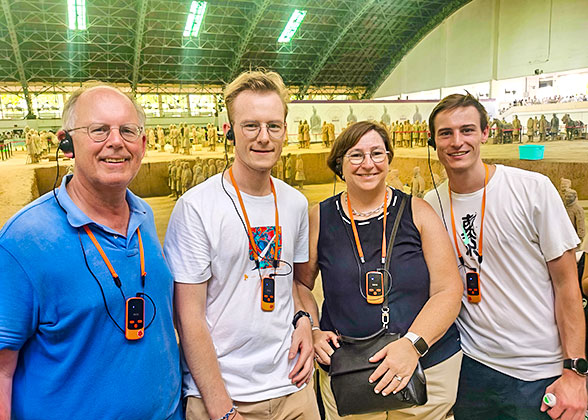At present, archaeologists have discovered over 180 accessory burial pits of various types surrounding the Qin Shi Huang Mausoleum. In addition to the three main pits of the Terracotta Army, other significant pits have been excavated, including a civil official figures pit, a bronze aquatic birds pit, a stone armors and helmets pit, and an acrobatics figures pit, as well as sites such as builders' graveyards, slaughter pits, and stable pits. All of these accessory pits reflect the Emperor Qin Shi Huang's pursuit of "treating the dead as if they were alive", bringing anything he had when alive to the afterworld so he could continue his royal life.
Currently, Pit K0006 and Pit K9901 are open to the public, while the others remain closed. However, cultural relics excavated from these pits can be viewed in the
Exhibition Hall of Historical Relics in the Terracotta Warriors and Horses Museum, and admission is included in the through ticket for the Terracotta Army.
In 2000, archaeologists discovered Pit K0006 in the southwest corner of Qin Shi Huang’s mausoleum, within the inner city walls. This pit, located closest to the emperor's mausoleum, covers an area of about 410 square meters (490 square yards). It was one of the few pits that had not been damaged by fire and remained well-preserved. Twelve terracotta figures were unearthed from this pit, including eight sleeve-clasping figures and four charioteer figures. They wear long crowns and show modest postures, contrasting sharply with the powerful warrior figures in
Pit 1. It is speculated that they are civil officials with high-ranking positions, earning the pit another name "Civil Official Figures Pit".
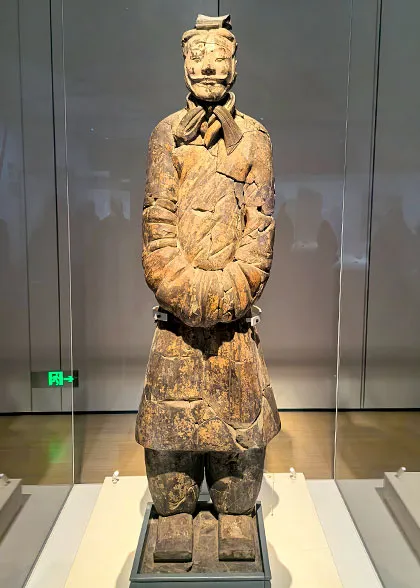 | | Sleeve-clasping Figure | | 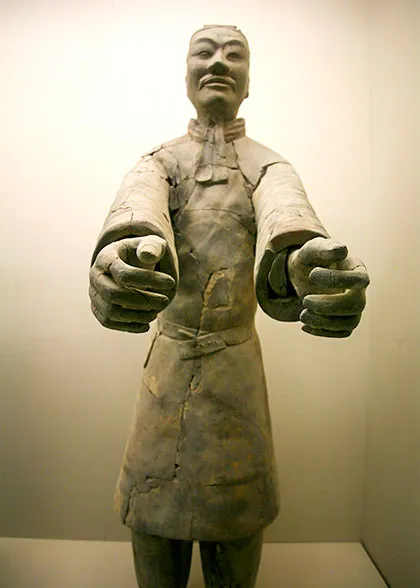 | | Charioteer Figure | |
In August 2000, nearby villagers discovered Pit K0007 about 1.5 kilometers (0.9 miles) northeast of the center of Qin Shi Huang's mausoleum, making it the farthest accessory pit found to date. Covering an area of approximately 978 square meters (1,170 square yards), the pit has been excavated to reveal 46 lifelike bronze aquatic birds, including cranes, geese, and swans, along with 15 terracotta figures presumed to be their trainers. Archaeologists speculate that this pit recreates a royal garden for the emperor's afterlife.
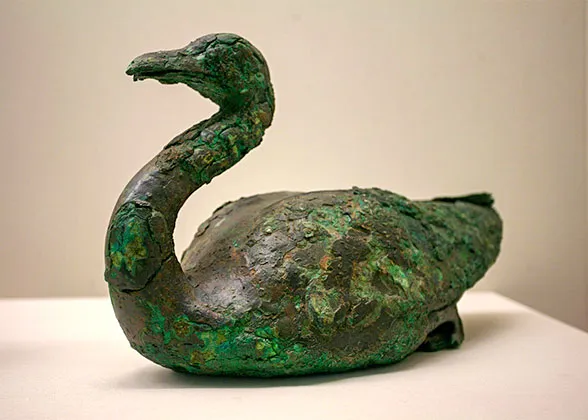 | | Vivid Bronze Swan | | 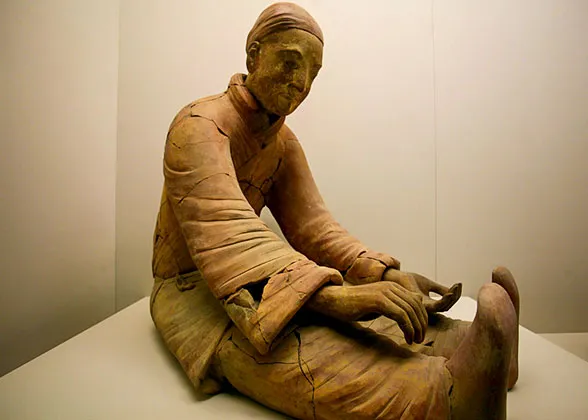 | | Sitting Terracotta Figure | |
Located in the southeastern area between the inner and outer city walls of the mausoleum, Pit K9801 measures about 130 meters (430 feet) long and 100 meters (330 feet) wide. With a total area exceeding 13,000 square meters (3.2 acres), it is the largest accessory pit inside Qin Shi Huang's mausoleum. Excavations have revealed 87 stone armors, 43 stone helmets, and three stone horse bridles. Current archaeological findings suggest that these items are burial objects rather than actual combat gear.
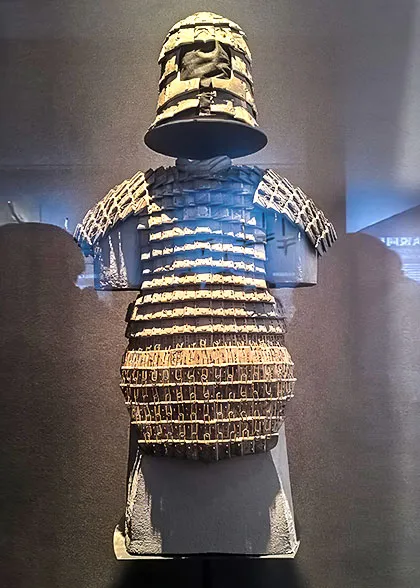 | | Stone Armor and Helmet | | 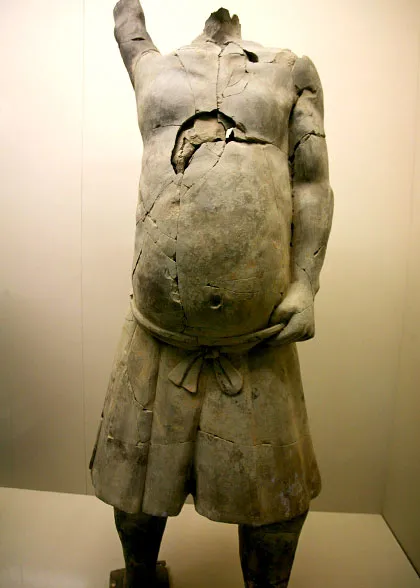 | | Tripod-lifting Performer | |
Pit K9901 was discovered in 1999 between the inner and outer city walls southeast of the mausoleum, also called the "Acrobatics Figures Pit". It covers a total area of around 700 square meters (840 square yards) and spans about 40 meters (130 feet) long from east to west. Excavations have yielded two bronze tripods and over 30 terracotta figures. One of the tripods, exquisitely crafted and massive, is hailed as "The First Tripod of Qin Shi Huang's Mausoleum." These life-sized terracotta figures, bare-chested and wearing short skirts, depict various acrobats and performers, vividly recreating scenes of court entertainment in the
Qin Dynasty (221 - 207 BC).
In 1980, two large painted bronze chariots and horses were excavated around 20 meters (65 feet) west of the mausoleum, 7.8 meters (25.6 feet) below the ground. They are the largest, most complex, and best-preserved bronze chariots and horses ever found in China, earning the title "The Crown of Bronze". As half-size replicas of real chariots and horses in the Qin dynasty, they feature single shafts, double wheels, and four-horse teams, adorned with elaborate painted patterns and over 14 kilograms (31 pounds) of gold and silver ornaments, reflecting their noble status. Now, they are displayed in the Bronze Chariots and Horses Museum at
Lishan Garden.
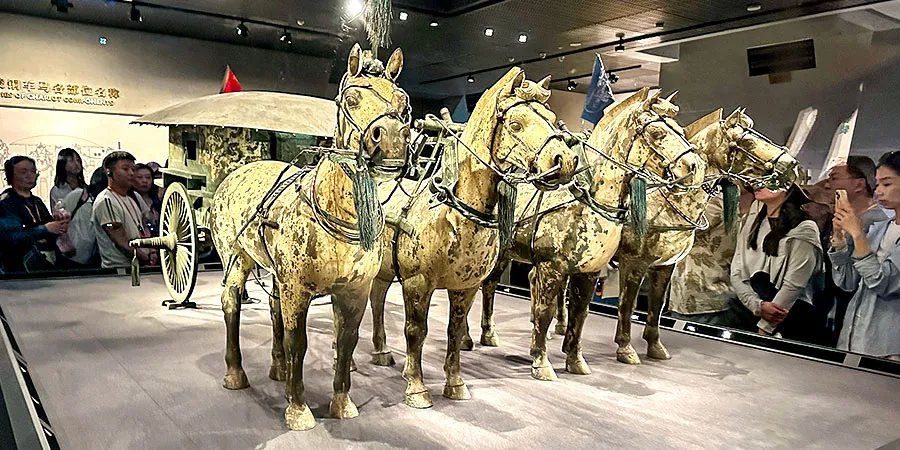 |
| Lifelike Bronze Chariot and Horses |
Builder's Graveyards
In the winter of 1979, local villagers discovered a site of builder's graveyards approximately 1.5 kilometers (0.9 miles) southwest of the mausoleum of Qin Shi Huang. The burial ground covers an area of about 8,100 square meters (9,700 square yards). Archaeologists have identified 114 tombs and excavated 32 of them, all of which were simple rectangular pits varying in size. The smallest measured just 0.8 meters (2.6 feet) long and 0.6 meters (1.9 feet) wide, and such an exceptionally narrow tomb was quite rare in the Qin Dynasty. Aside from tools such as hoes, sickles, and chisels, none of the tombs contained coffins or burial objects, which corresponded to the builders' status as laborers.
It's worth noting that the 32 tombs collectively held over 100 skeletons, with some pits containing multiple bodies; one even held 14 bodies. The owners of these tombs, primarily young adult males, were jumbled together, indicating that they were buried in haste and carelessly. Additionally, 18 inscribed tile fragments were found covering the deceased. These tiles recorded the builders' names, hometowns, and rank information, considered the earliest known epitaphs in China.
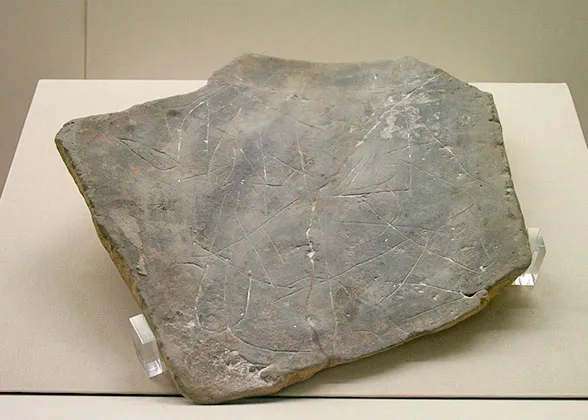 | | Inscribed Tile Fragments | | 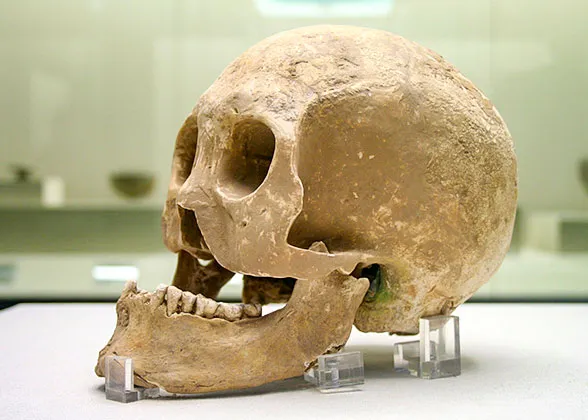 | | Skull Unearthed from Slaughter Pits | |
Slaughter Pits
To the west of the mausoleum, archaeologists discovered 17 slaughter pits arranged in a north-south alignment. Eight have been excavated, all of which were high-status tombs shaped like the Chinese character "甲", with ramped passageways, pointing to the elite status of those buried within. One pit excavated no human remains, only a bronze sword, while the others contained seven skeletons in total. The burial objects included animal bones, gold and silver ornaments, jade, lacquerware, and silk fragments, totaling around 200 pieces. Combined with historical records, experts speculate that the deceased may have been princes, princesses, or high-ranking officials executed by the second emperor of the Qin dynasty after he acceded to the throne.
A particularly striking find was a skull unearthed outside the city walls of the mausoleum, embedded with a bronze arrowhead. Its protruding jaw and contorted expression suggest the owner of this skull was shot unexpectedly and defenselessly.
Stable Pits
In 1976, archaeologists uncovered two sites of stable pits in the eastern area of the emperor's mausoleum, between the inner and outer city walls. Located east of the tomb mound, the first site was inferred to contain hundreds of stable pits originally. However, only 93 were clearly discernible and arranged in three orderly north-south rows. Among these, 74 pits each held the skeleton of a single horse, four contained only kneeling terracotta figures, six housed both horses and terracotta figures, and the remaining nine had unclear contents. The horse skeletons in these pits displayed signs of struggle and binding, suggesting that they were buried alive. Pottery bowls and other feeding vessels were placed in front of their heads.
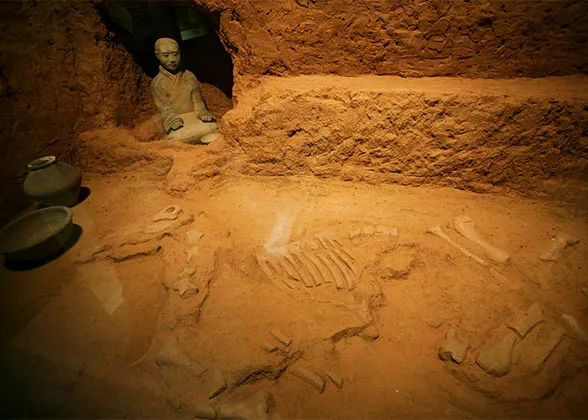 | | Sites of Stable Pits | | 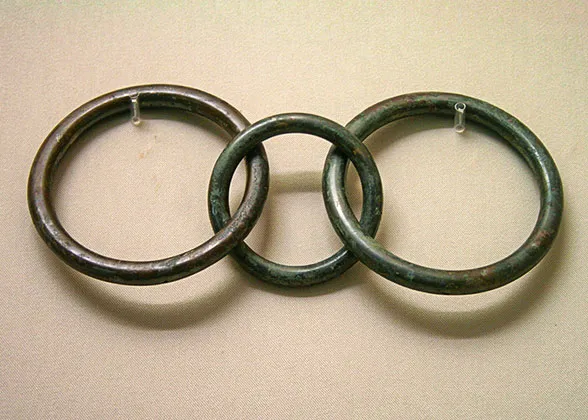 | | Bronze Rings | |
The second site, situated west of the mausoleum between the inner and outer city walls, was more extensive. This site features a double-passage stable pit with an area of about 580 square meters (690 square yards) and an L-shaped stable pit of about 1,700 square meters (2,000 square yards). In the latter pit, each three horses were placed in a wooden enclosure, lying down and densely arranged. It was supposed that hundreds of horses may have been originally buried there. In addition, 11 large terracotta figures were unearthed from this site, likely depicting horse grooms.
Rare Birds and Animals Pit
Located west of the emperor's mausoleum, between the inner and outer city walls, this pit covers an area of roughly 2,000 square meters (2,400 square yards). Designed to replicate a Qin imperial hunting park for the emperor's afterlife, it consists of 31 neatly arranged burial pits. They were divided into three rows: six in the east, eight in the west, and 17 in the center.
The central burial pits contained rectangular tile coffins. The animal skeletons unearthed from these coffins had been identified as herbivores like deer and muntjac. Each skeleton had a bronze ring around its neck, indicating that it had been domesticated. In burial pits on both eastern and western sides, some terracotta figures, which were presumably the people responsible for feeding these animals, were also discovered.
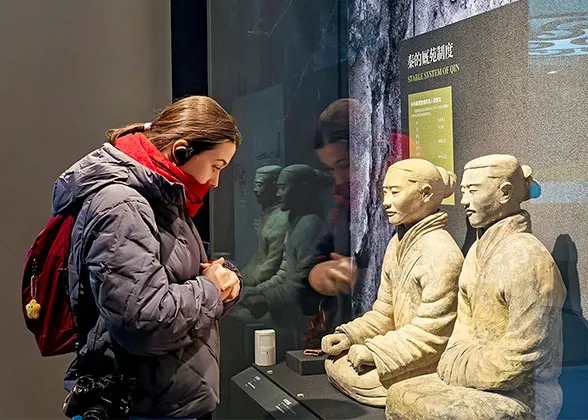 | | Rare Animal Feeder | | 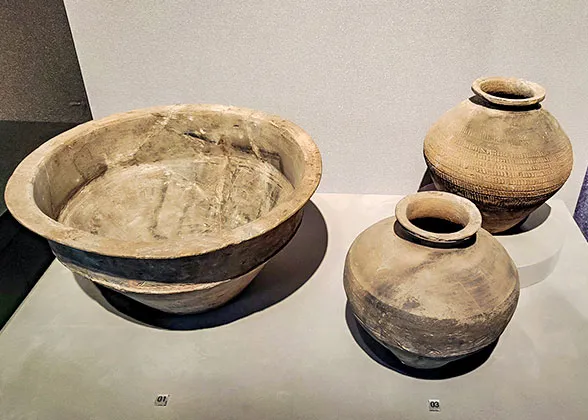 | | Pottery Basin for Feeding Animals | |
 You may like:
You may like:
- Last updated on Aug. 22, 2025 by Doris Xue -

![]() You may like:
You may like:











